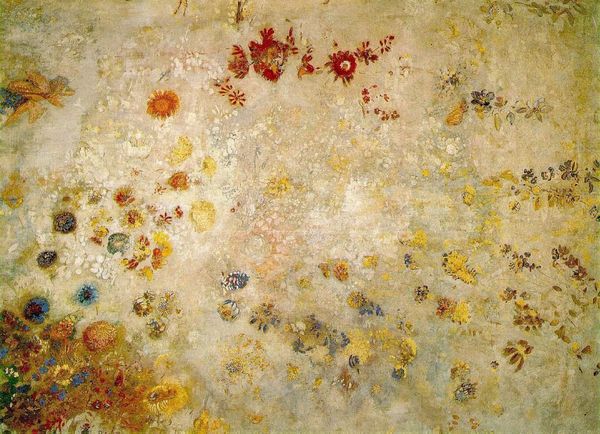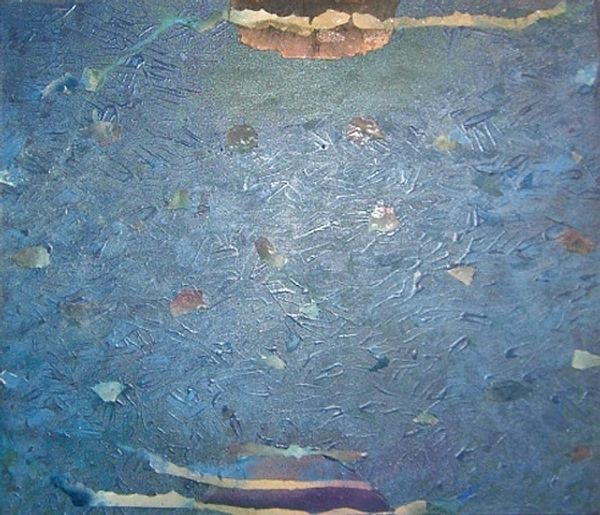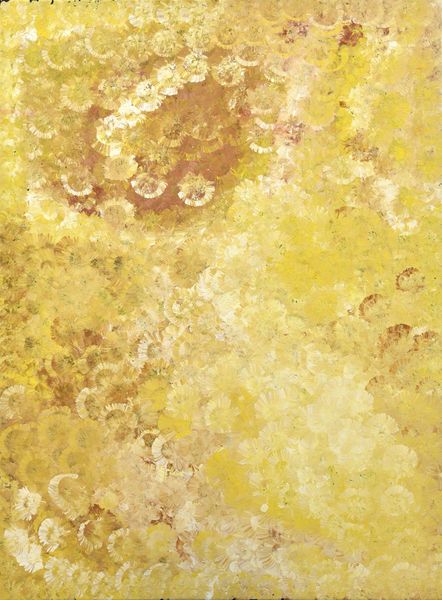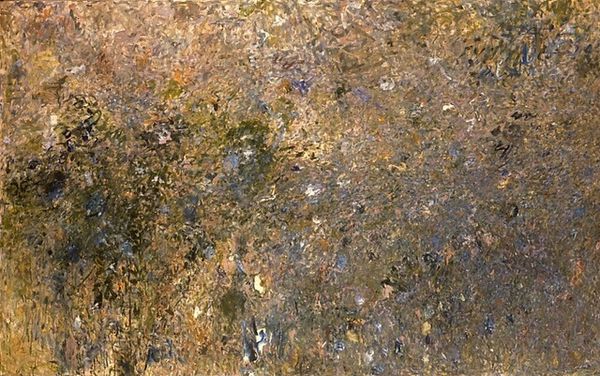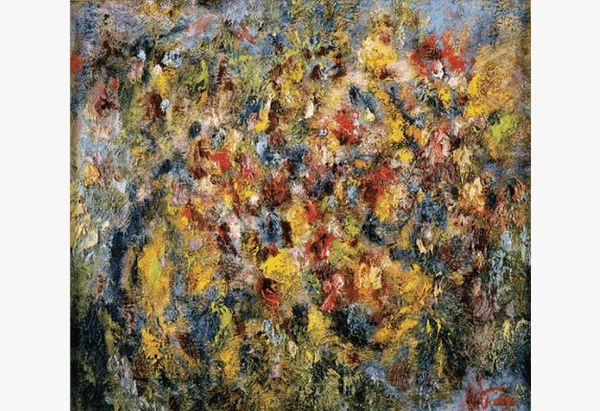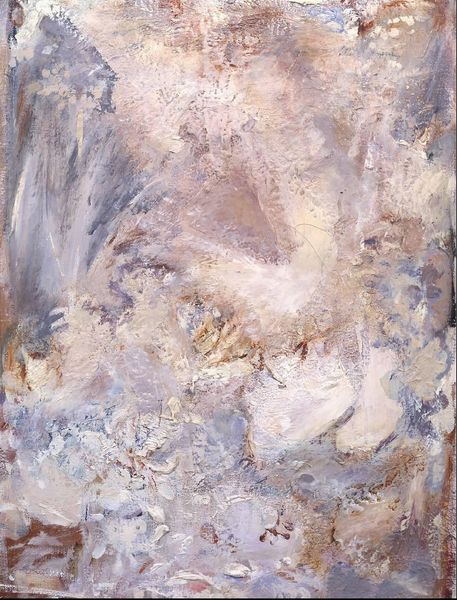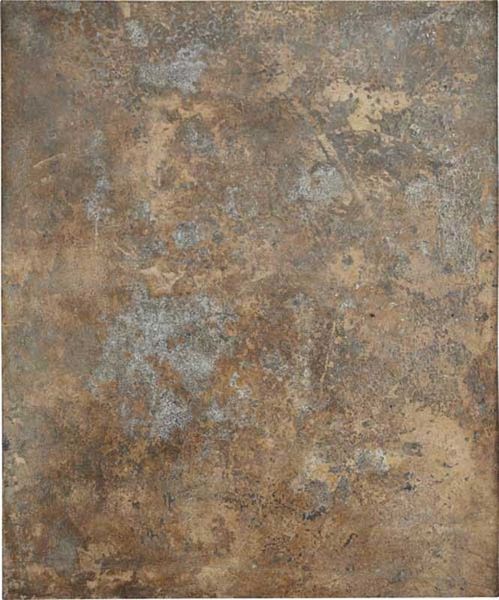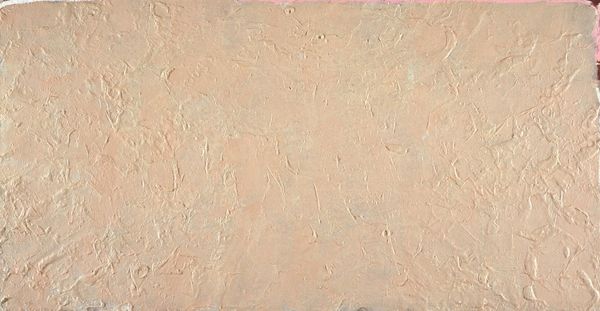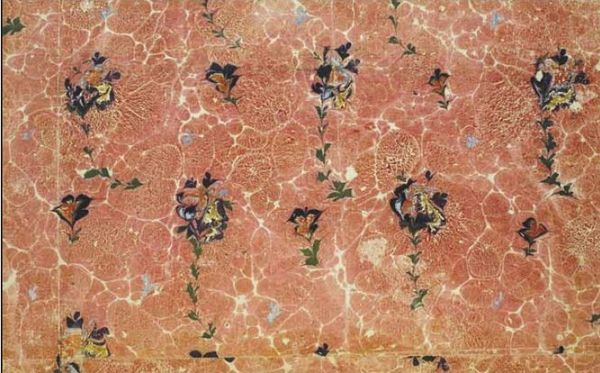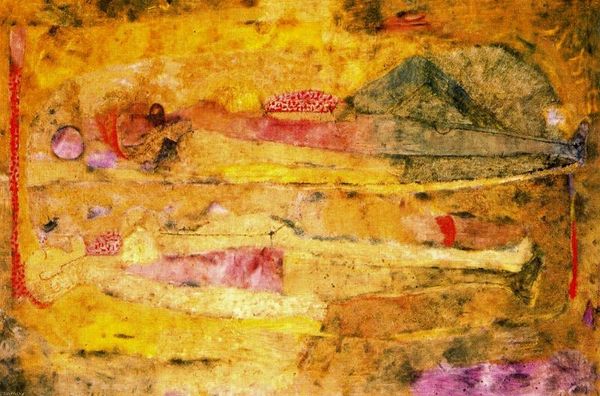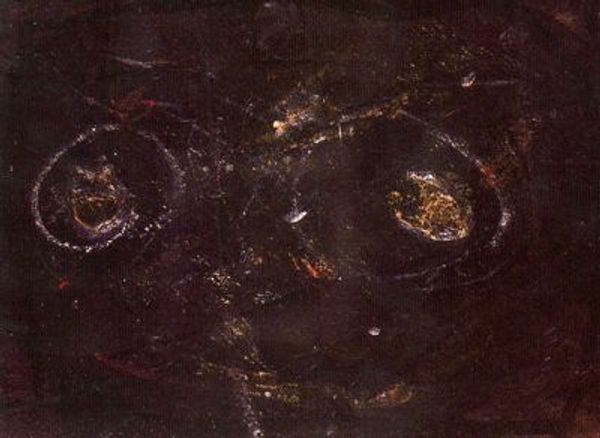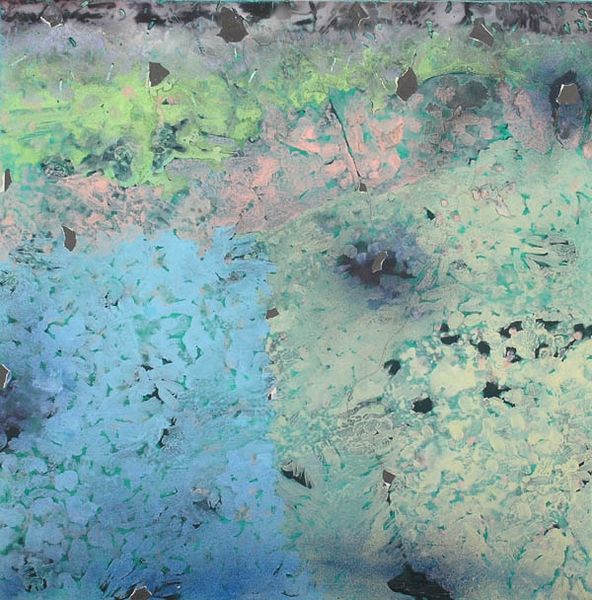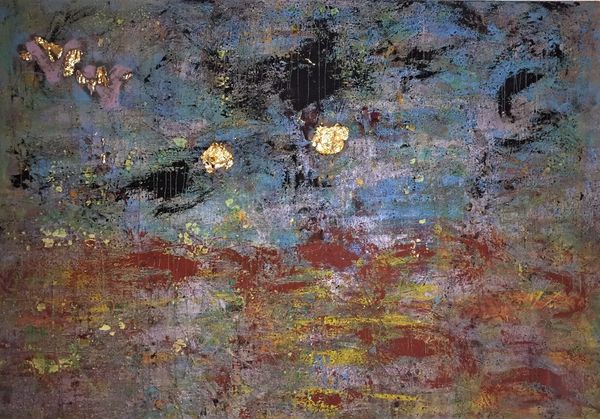
matter-painting, painting, oil-paint
#
allegories
#
natural stone pattern
#
abstract painting
#
matter-painting
#
symbol
#
painting
#
oil-paint
#
landscape
#
symbolism
#
watercolor
Copyright: Public domain
Editor: Here we have Odilon Redon’s “Underwater Vision” from 1910, painted with oil paint. The surface is truly captivating – like looking into a tide pool teeming with unknown life. What stands out to you when you examine the materials and techniques used here? Curator: The materiality is fascinating. Redon’s choice of oil, traditionally associated with high art, is significant. But notice how he manipulates it. The paint isn’t about illusionistic depth or mimetic representation. Instead, it emphasizes the very act of its application, the layering and blending create a textured surface almost like the sediment at the bottom of the sea. Editor: I see what you mean. It's almost anti-classical in its emphasis on process. Curator: Precisely. Consider also the date, 1910. Industrial production was rapidly transforming society, and artists like Redon were increasingly concerned with the role of craft and individual making in the face of mass production. “Underwater Vision” isn’t just a representation; it’s an engagement with the value of handcrafted artistry and tactile exploration. Do you notice a connection here with, say, contemporary concerns about labor and automation? Editor: Yes, that's interesting! It is a departure from traditional representation, pointing toward a very modern exploration of art as a physical act. Are you saying the subject matter might even be secondary to Redon’s focus on the medium? Curator: Exactly. The title, “Underwater Vision”, suggests an exploration, not just of what we see, but how we see and how that vision is mediated through material and labor. This piece invites us to consider the entire system of art making. Editor: I've certainly gained a deeper appreciation for the materiality and how the artist challenges conventional norms of painting through his choice of materials and application techniques. It encourages me to see familiar subjects in fresh new perspectives.
Comments
No comments
Be the first to comment and join the conversation on the ultimate creative platform.
